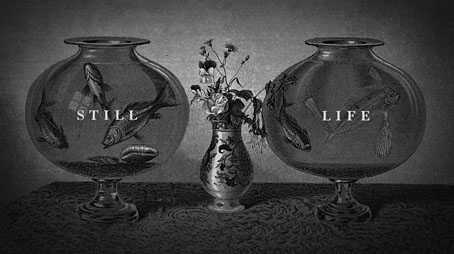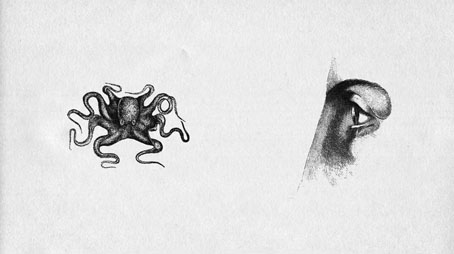Still Life is a short film that takes a novel approach to the use of engraved illustrations in animation. Instead of the collage techniques deployed by other film-makers, Connor Griffith has used what’s known as replacement animation to make it seem as though a large quantity of objects are evolving in series; any apparent movement is caused by persistence of vision rather than the movement of the objects themselves. This parade of miscellaneous items brings to mind the 19th-century obsession with the compiling of catalogues and taxonomies, especially during the second half of the film in which a human eye observes a variety of animals and body parts.
Some of these items are very familiar despite being visible for fractions of a second. Two of Griffith’s source books are copyright-free volumes I’ve been using myself for many years, and which may now be found in digital copies. One of these, the Dover collection of illustrations from the Deberny Type Foundry, was featured here a year ago in its original form, Clichés & Gravures (1912). The other book, Johann Heck’s Iconographic Encyclopedia of Science, Literature and Art (1852) is one you can still find as a hardback facsimile reprint, retitled The Complete Encyclopedia of Illustration. The Internet Archive has several copies of Heck’s originals (eg: Volume 1 and Volume 2). It’s good to have access to scans of this collection but many of the illustrations are very small, especially in the scientific section. Physical copies are still the best if you need a sharp, high-res reproduction.
Previously on { feuilleton }
• Hamfat Asar, a film by Lawrence Jordan
• Carabosse, a film by Lawrence Jordan


